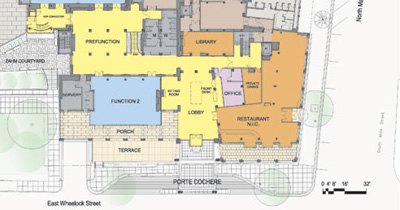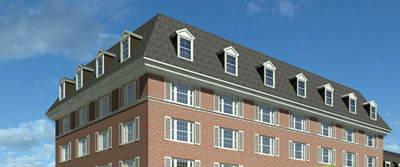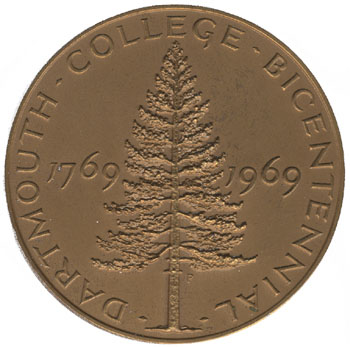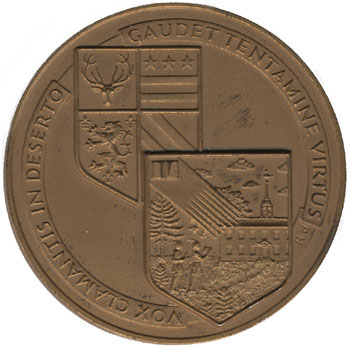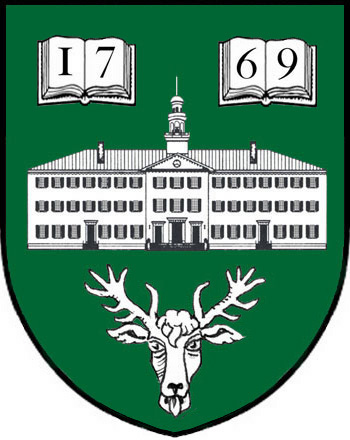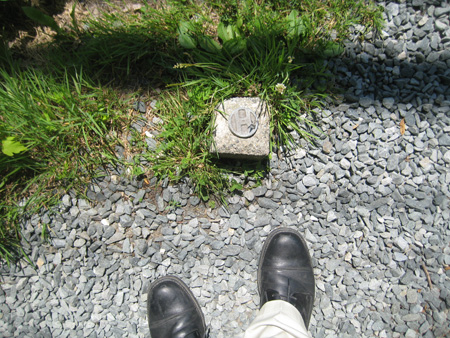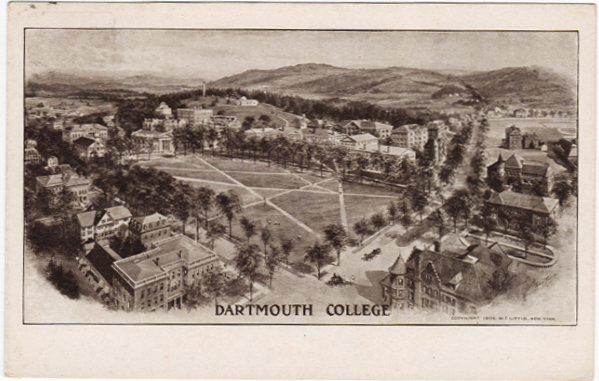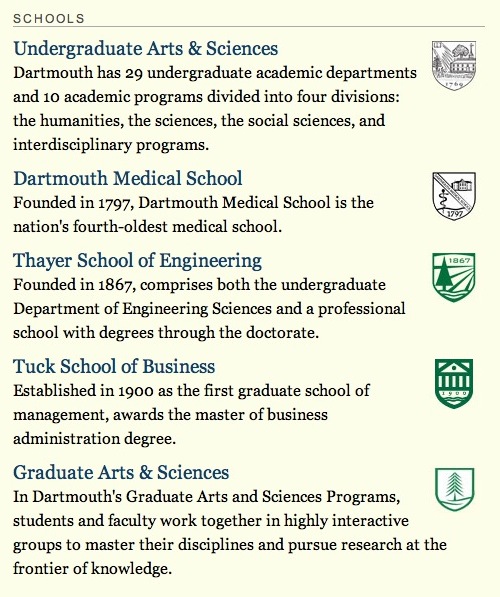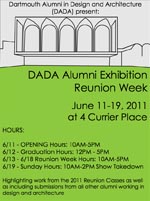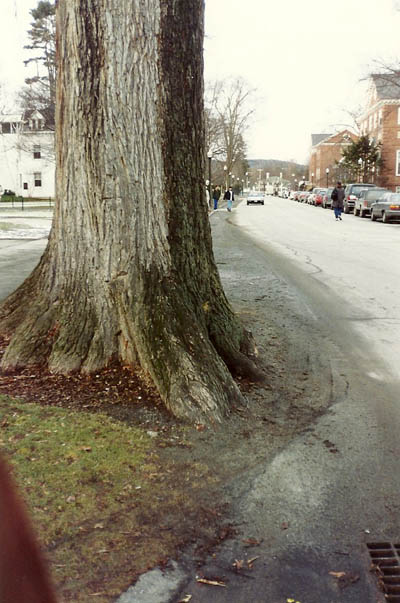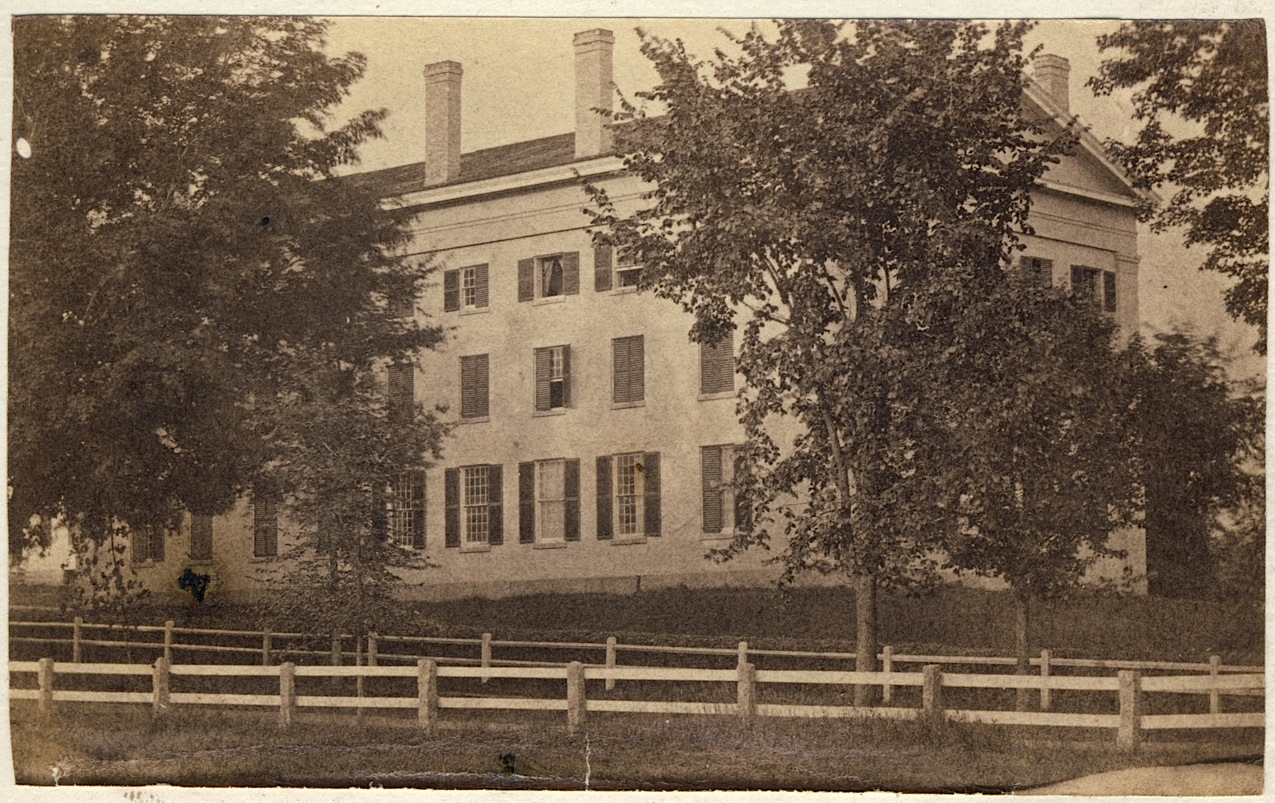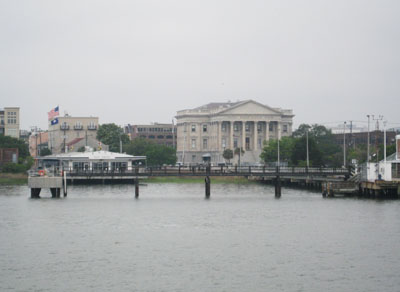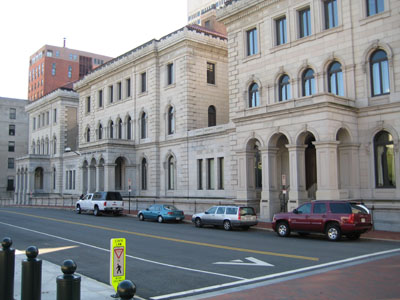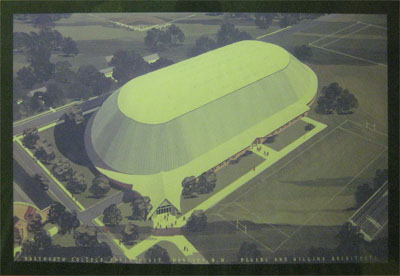
This announcement did not get much publicity when it was published almost a year ago, but it is noteworthy: Centerbrook has completed its master plan for the Hood Museum, and the plan contains a proposal to convert the adjoining Wilson Hall into museum space.
Wilson Hall was built as the college library and picture gallery. Its attic level, with iron trusses supporting a steeply-pitched roof, was designed for the display of paintings.
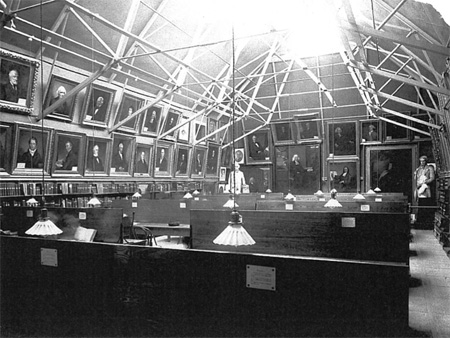
After the Butterfield Museum was demolished and Baker Library was built behind it, Wilson Hall became the home of the College Museum.
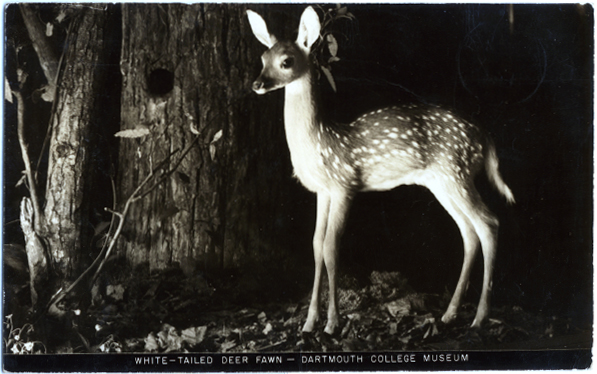
Charles Moore and the architects of Centerbrook placed their Hood Museum below Wilson Hall during the early 1980s, connecting the two buildings with a whimsically-busy enclosed staircase. The firm also renovated Wilson itself for the use of the Film and Television Studies Department.
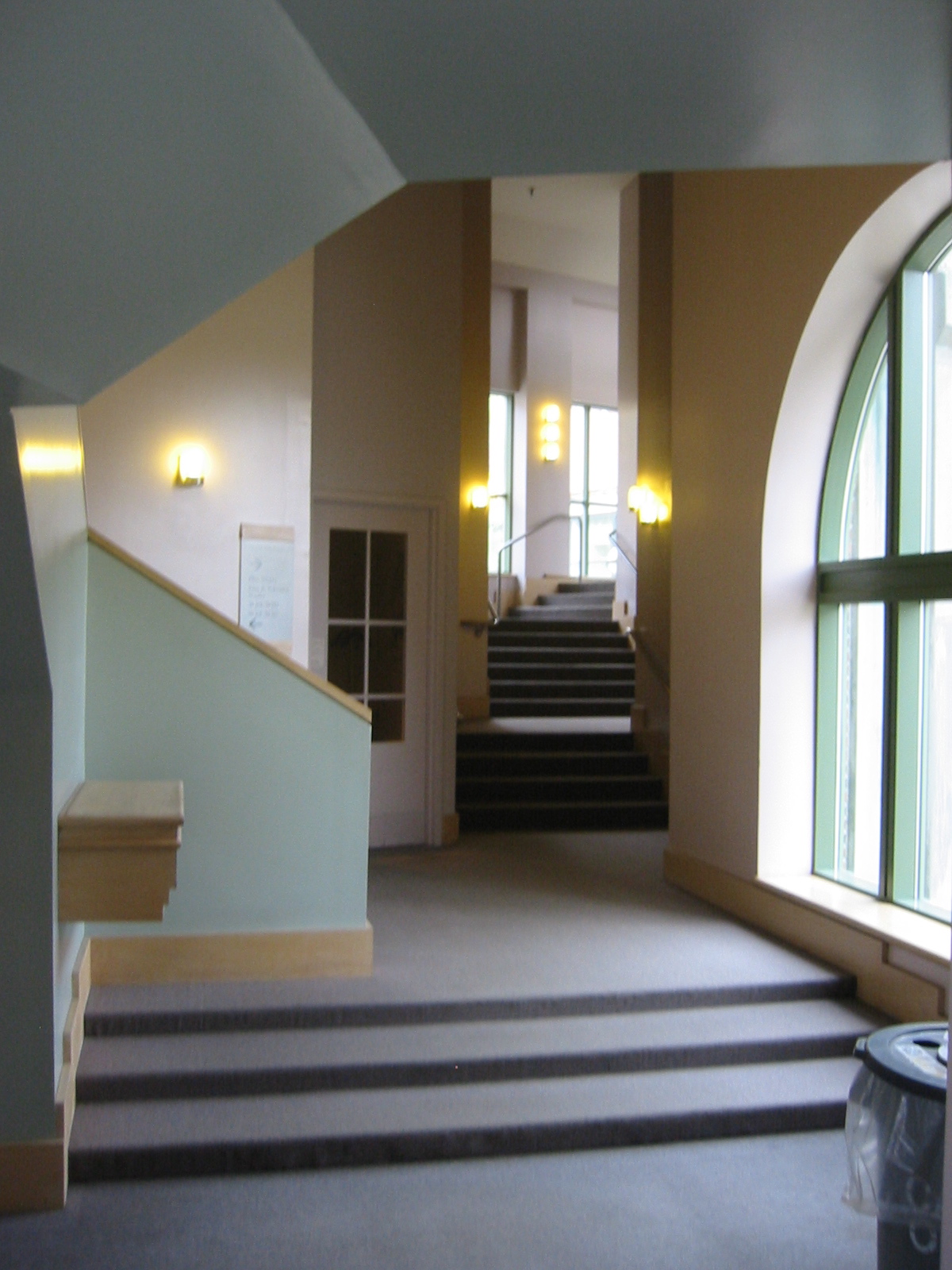
The main entrance to the Hood, of course, was hidden from the view of passers-by. Visitors have to pass through the gate and walk up a broad ramp off to the side.
Now Centerbrook proposes to demolish (presumably) the Wilson connector and replace it with a new three-level addition. New galleries, offices, and classrooms could then go into Wilson and the addition, and Wilson’s presently shadowy entry arch could become the entrance to the whole museum complex:
With some improvements for access to the handicapped, Wilson Hall’s front door will become the Hood Museum’s new principal entry and be transformed by large glass windows to convey transparency and engage passersby on the busy campus green.
Although the large glass windows are a bit worrisome, the overall plan sounds like an excellent one. Will the Hood’s original ramp-entrance remain, or will it too be altered?
——
[Update 04.05.2012: Wilson portrait gallery image added.]
